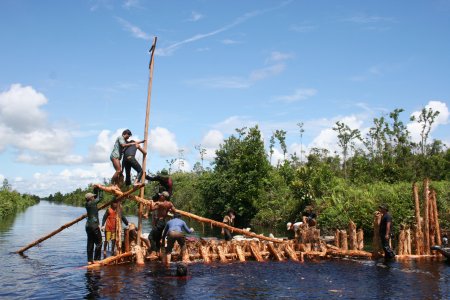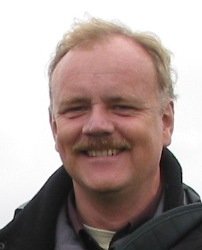Restoring Southeast Asian peatlands with traditional approaches

One of the biggest environmental disasters is happening right now. It concerns the large-scale conversion of Southeast Asia’s peatswamp forests to drainage-based agriculture and forestry. The dominant crops are oil palm (for vegetable oil) and Acacia (for paper).
These peatswamp forests have evolved over thousands of years in acidic waterlogged conditions, forming an organic soil of accumulated dead plant material. This peat soil consists of around 90% water and 10% carbon. The peat layers may be metres thick, even up to 20 meters. Peat forests are areas of high biodiversity, harbouring many endangered species such as Sumatran Tiger, Tapir and Orangutan, but also many less well known species such as the Otter-Civet, Hairy-nosed Otter, False Gharial and Storm’s Stork. The rich freshwater biodiversity includes many point endemics: fish and insect species that are known from one site only. The degradation of these special wetland habitats has resulted in a major loss of biodiversity, and hardly any pristine areas remain.
Peatland drainage has turned these huge natural carbon stores into greenhouse gas sources, contributing half of Indonesia’s and a quarter of Malaysia’s anthropogenic emissions. It also leads to increased fire risks: in every dry year since 1982 there have been peat fire events raging across millions of hectares. The resulting dense smog has repeatedly covered the entire Southeast Asian region, affecting the quality of life, health and economy of 69 million people and killing thousands of people. Another impact of drainage is the inevitable loss of the peat soil through mainly compaction and carbon emissions, resulting in soil subsidence, flooding and salt water intrusion. These impacts also affect land productivity and food security.

The Indonesian government has established a Peatland Restoration Agency, tasked to restore over two million hectares by 2020. This will require the participation of all stakeholders. Local communities can play a key role, as they have been utilising peat swamp forests in many sustainable ways. Hundreds of plant species from the peat forests have commercial value for food and medicinal uses and as construction materials. Some could be introduced as alternative agricultural and forestry crops to replace palm oil and Acacia. Native peatswamp tree species can be grown without drainage on re-wetted peat soil, a practice known as paludiculture. Paludiculture can reduce fire risks and peatland emissions and can protect the productive land from soil subsidence and flooding. In addition, reduced emissions from peat degradation, together with carbon sequestration in the paludiculture plantations, can produce carbon credits for the voluntary carbon market. Dayak communities in Borneo have also used peatlands for fisheries, including aquaculture with traditional fish ponds called Beje, providing a rich source of protein from some of the tastiest fishes in the world.
Local communities, with their traditional knowledge, can therefore contribute significantly to peatswamp restoration and climate change mitigation. Options for scaling up some of their traditional uses of commercially valuable peatswamp species warrant urgent investment in research and piloting. Wetlands International is therefore establishing a fund for community-based peatland restoration initiatives, the Indonesian Peatlands Partnership Fund (IPPF). We welcome the participation of donors and the Corporate Social Responsibility community in this important development.

By Marcel Silvius (Head of Wetlands International's Global Programme on Climate-smart Land-use)
As Head of Wetlands International’s global programme on Climate-smart Land-use, Marcel oversees a broad portfolio of international and local projects on peatland restoration and conservation. This includes leading research on peatland issues and advocacy to influence policy processes in conventions, governments and industry. The programme works through partnerships on peatlands in eastern Europe, SE Asia (Malaysia, Indonesia), north Asia (China, Mongolia) and Latin America. Marcel’s work involves active dialogue with industry and investors in the palm oil sector, pulp-for-paper plantation industry, biofuel sector, European peat extraction and growing media industry and REDD+ investors in ecosystem restoration projects.